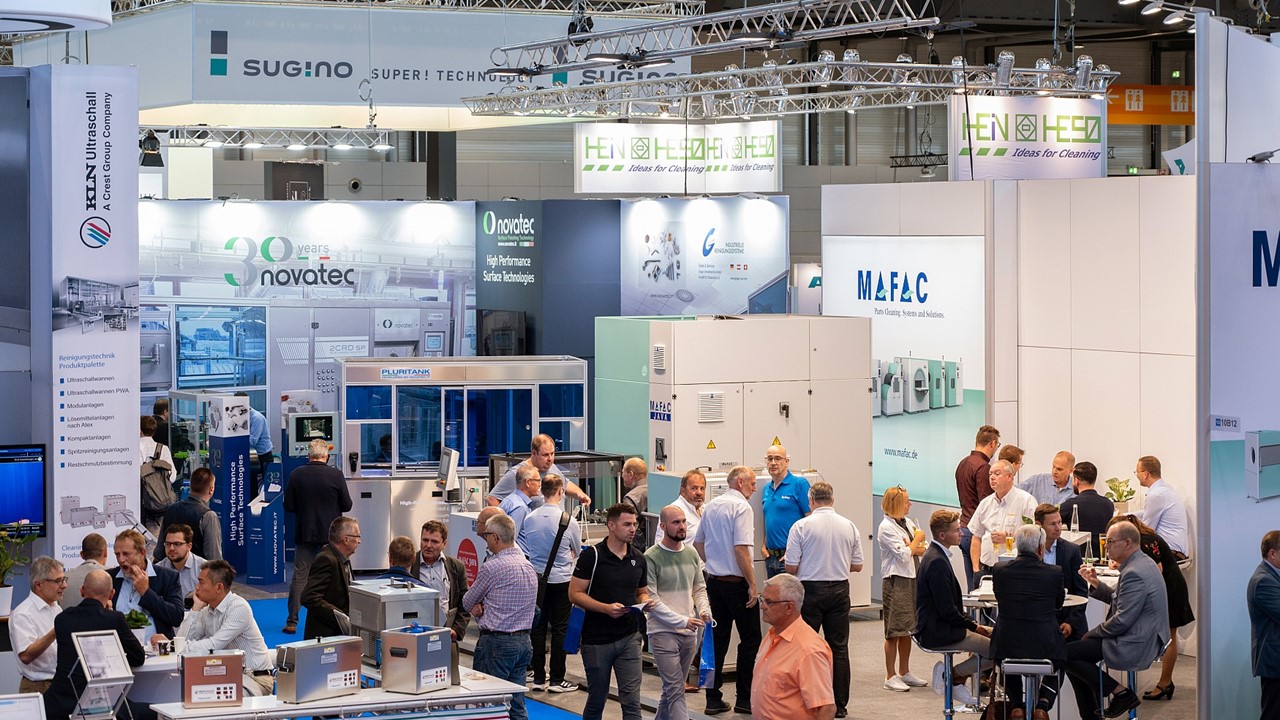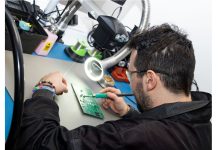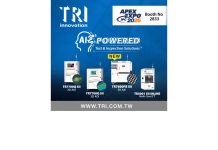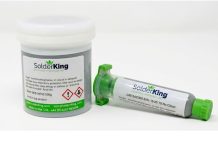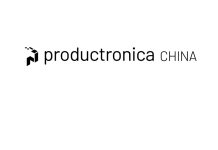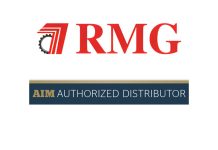Large areas of industry are now focusing on producing sophisticated products for growth sectors. This is accompanied by higher demands on technical cleanliness, which cannot be met with a cleaning process at the end of production. Instead, the focus must be directed at the “cleanliness” quality criterion throughout the entire production process. The exhibitors and the supporting program at parts2clean will provide information on the aspects that need to be taken into account. Examples include how cleaning tasks along the production chain can be solved not only in line with requirements, but also efficiently and in a way that cuts resource wastage. The 21st leading international trade fair for industrial parts and surface cleaning will be held at the Germany-based Stuttgart Exhibition Center from 7 – 9 October 2025.
Due to technological upheavals, more and more companies are rethinking their product range and increasingly focusing on producing sophisticated components with higher added value for high-tech growth industries. These include aerospace, measurement and analysis technology, medical and pharmaceutical technology, sensor technology, new mobility, electronics, microsystems technology, the defense industry, vacuum technology and the semiconductor industry, including their suppliers. “In these industrial sectors, components have to fulfil very high demands in terms of performance, quality, and reliability,” explains Ramtin Randjbar-Moshtaghin, Project Director at Deutsche Messe AG. “The requirements for particulate and filmic cleanliness are set correspondingly high.”
Looking at the production chain from a cleanliness perspective
Conventional cleaning processes, which are used to achieve the required level of cleanliness at the end of production, reach their limits here. Consequently, every phase of product development has got to be scrutinized from a cleanliness perspective. This starts right from the development stage: Has the component been designed for ease of cleaning? Cleanability has a decisive influence on a new product and its added value. In other words, it is an enabler here.
Afterwards, each production step, for example milling, forming, casting, additive manufacturing or coating, must be assessed with regard to its influence on the technical cleanliness of the overall product. One of the issues here is whether the operating and auxiliary materials used can be easily cleaned off or contain critical ingredients. There is also the question of whether residues from the upstream process impair the downstream processing, thus making intermediate cleaning necessary. When it comes to assembly and/or final cleaning and packaging, the production environment also comes into play – is a clean room required? In order for component manufacturing to be competitive, cleaning has not only got to be based on what is needed, but also economical without squandering either energy or resources.
Efficient and sustainable solutions for all parts cleaning tasks
“The exhibitors at this year’s parts2clean will be presenting optimally customized and future-oriented solutions for these requirements,” reports Ramtin Randjbar-Moshtaghin. “And this applies regardless of what the workpieces to be cleaned are made of, and whether it is deburring, pre-cleaning, intermediate or final cleaning, or a high-purity application.” The portfolio encompasses plants, systems, media, and process technologies for fluid-based processes and energy-efficient drying as well as solutions for dry cleaning. Further areas include cleaning containers and workpiece carriers, technologies for water treatment and bath care as well as for controlling, monitoring, and checking the cleaning, rinsing, and drying processes and the cleanliness achieved. Solutions for the automation of cleaning, including parts handling, as well as for the digitalization and integration of cleaning processes in networked production environments and the use of AI offer opportunities to counteract the shortage of skilled workers. The range is rounded off by clean and ultra-clean rooms, cleaning services, and specialized literature. “Thanks to the complete range and the participation of all relevant suppliers from the various segments, users of industrial cleaning technology from all sectors can obtain comprehensive information about development trends, technologies, methods and processes,” adds Ramtin Randjbar-Moshtaghin. “This also includes the optimization of existing processes with regard to achievable cleanliness and designing them for greater resource and energy efficiency.”
Competition-relevant topics and innovations also in the supporting program
The supporting program at this year’s parts2clean is also optimally adapted to the current challenges in parts and surface cleaning. In the bilingual p2c.EXPERTFORUM, renowned experts from research and science, as well as from associations and industry, will offer knowledge and expertise, as well as benchmark solutions, in simultaneously translated presentations (German <> English). The special “Technical Cleanliness Process Chain” show, organized jointly with the CEC (Cleaning Excellence Center), will take a look at cleaning with the associated production processes, and thus provides the foundation for pragmatic solutions. The Fachverband industrielle Teilereinigung association (FiT) will once again be represented with a special showcase and informative presentations. A crowd-puller on 9 October will be the presentation of the “FiT2clean Award”, an innovation prize worth 10,000 euros. Every year, the FiT trade association presents this award in recognition of outstanding achievements and innovative solutions in industrial component cleaning.
Further information can be found at www.parts2clean.de. Information on the supporting program as well as the complete program of presentations at the p2c.EXPERTFORUM will be available from mid-July on the website.


